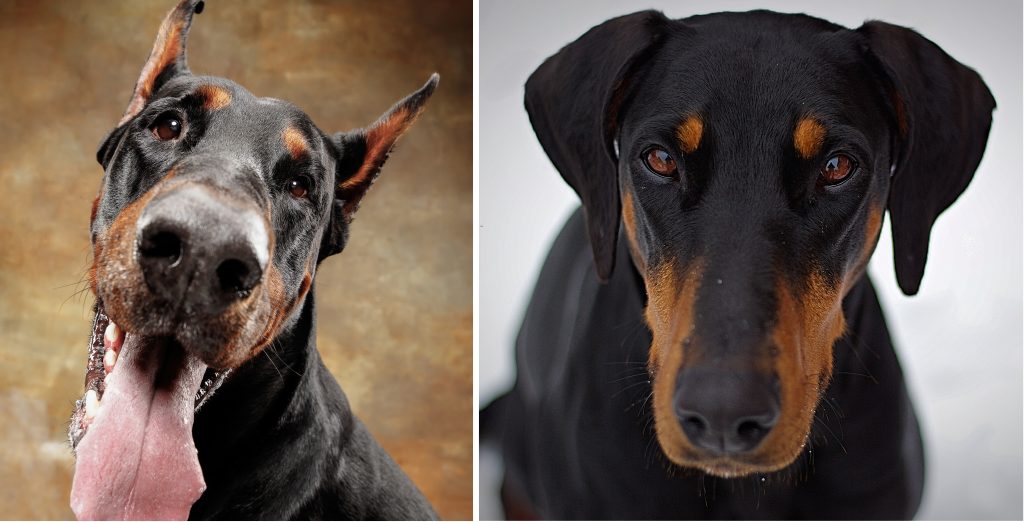Docking, cropping, and declawing are outdated and controversial procedures that were still regularly performed not so long ago. Over the years, more and more countries have banned or restricted these procedures, and the general belief about the necessity of them has shifted. However, there are still many countries without any rules regarding docking, cropping, and declawing, and they are still commonly performed on pets. So let’s dive deeper into what docking, cropping, and declawing are, why these practices are outdated, and why one shouldn’t dock, crop or declaw their pet even if not forbidden by law.
Tail Docking
We speak of docking, also referred to as bobbing, when a part of, or the whole tail is removed. Docking is done in both cats and dogs, though it is more commonly seen in dogs. Back in the day, docking was mainly done for practical reasons, for example, in working dogs, as their tail was easily damaged on the job and an easy target for opposing animals to grab. Nowadays, docking in dogs is mainly done for aesthetic reasons. While less commonly seen in cats, docking does happen and is often performed to conform to an expected breed standard or even to conform with the rest of the litter.
There are three main methods of docking: removal by laser, surgically removing the tail with a scalpel or surgical scissors, and the last method being by constricting the blood supply to the tail with a rubber band, which will result in it dying and falling off. Docking is generally done without anaesthesia on young animals less than 5 days old. This because the belief was (and in some cases is) that younger animals would experience less pain. However, the basic nervous system of both dogs and cats is fully developed at birth, making docking without anaesthesia an extremely painful and traumatic procedure.
Tail docking has several implications for the pet, the first being that it impacts their ability to communicate. Dogs and cats communicate mainly through body language, and their tail is an important part of this. By removing the tail, their communication will become harder to read, which might lead to miscommunications. Research done on dogs with docked tails, shows that the hindrance in communication can lead to fear and anxiety behaviours.
Some sources also believe that the removal of the tail impacts balance, especially when running, and it affects swimming as the tail acts as a rudder. Some professionals believe that the extra stress imposed on the joints trying to compensate may have long-term health consequences.

Ear Cropping
We speak of cropping when a part of the external flaps of the ears are removed. In dogs, cropping was historically done, just as tail docking, mainly for practical reasons in working dogs. The ears were easily damaged when out in the field and are an easy target for opposing animals to grab. Cropping was commonly used in breeds that were used as livestock guardians, and working breeds that were bred to hunt animals which might fight back. In this day and age, cropping in dogs is mainly done for aesthetic reasons giving dogs a more “fierce” look, and in some cases because of the misguided belief of it having health benefits. Ear cropping procedures are done under full anaesthesia by a veterinarian, though it’s not unheard of that in certain networks the procedure gets done by people themselves without anaesthesia, which is painful, traumatic, and leaves the pet open to all kinds of complications.
Ear cropping has several implications for the pet, like it affecting their ability to communicate. The ears are an important part of the body language communication used by dogs, and without their ears the chances of miscommunications with other dogs, but also humans, are higher. And while not as well documented as the consequences of tail docking, it’s believed that this impact on communication can lead to anxiety and fear behaviours.
A second implication is that it may affect hearing. While originally it was thought that cropping the ears would help with hearing, the main belief now is that it’s more likely the opposite. Cropping removes a part of the visible portion of the outer ear, which normally would act like a funnel and amplify the sound into the ear. It was also thought to be medically beneficial to crop ears, though current veterinary medicine indicates that there is no medical or physical advantage.
Removing large parts of the ears as seen in dogs is uncommon in cats, though the ear tip removal done on feral cats after neutering is also considered cropping. The tipping of ears on cats however doesn’t affect their ability to communicate as only the tip of the ear is affected. The procedure is also always done under general anaesthesia as it’s done when they are being neutered.

Declawing in cats
While declawing may sound innocent and imply only the nails of the cat being removed, the opposite is true. When a cat gets declawed, the last bone of each digit is fully removed. This would be equal to removing all of our fingertips. Declawing is purely done for the ease of humans, preventing the cat from making scratches on skin or furniture. For cats, however, declawing can lead to a range of problems like over-grooming and back pain due to the change in their gait.
Another common complication seen in declawed cats is that tiny pieces of the last bone remain in the paw (in about 63% of the cases), which can lead to bony spurs within their toes. Cats with residual bone fragments were found 10 times more likely to poop and pee outside their litterbox. The suspected reason for this is that they don’t like walking and digging in litter due to their toes being sensitive or even sore.
Research shows that declawing increases the risk of unwanted behaviours due to long-term or persistent pain.

Conclusion
Docking, cropping, and declawing were procedures originally done because they were perceived as beneficial without risk for the animal. We now know better, and these procedures can be detrimental to the well-being of our pets. While many countries have put bans or restrictions in place on cropping, docking and declawing, these procedures are still commonly performed on pets around the world. As pet owners, we now know better, so it’s our job to choose better for our pets.
Would you like to know more about our pet care services? Feel free to contact us. Our team will be glad to help.

